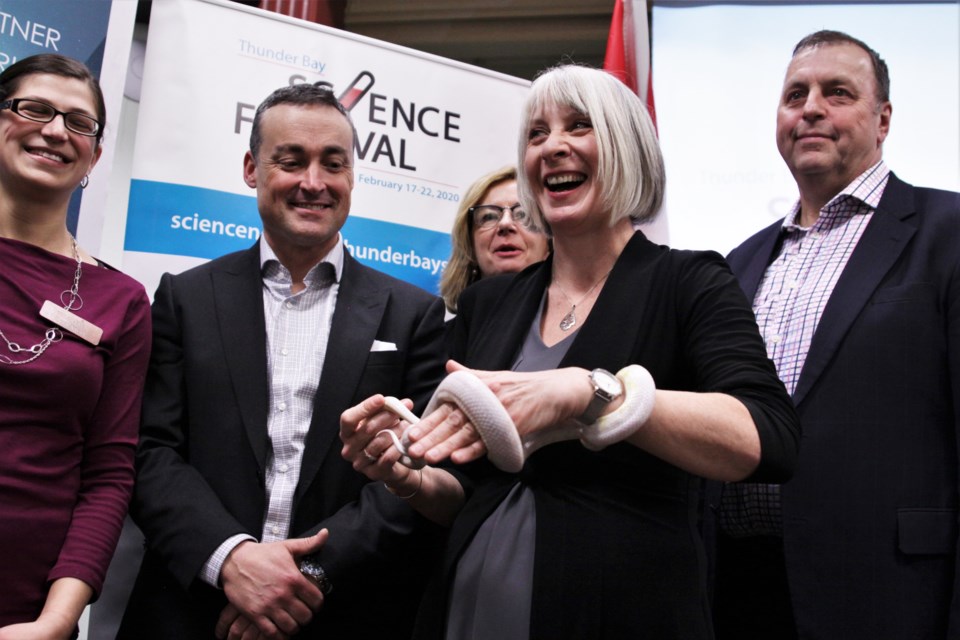THUNDER BAY – Efforts to bring a permanent science centre to Northwestern Ontario got a boost Friday, as Minister Patty Hajdu announced $100,000 in FedNor funds for a Science North feasibility study on the project. Hajdu announced an additional $100,000 for the organization to conduct climate change education across Northern Ontario.
Science North already runs Canada’s second-largest science centre in Sudbury, which Labine says attracts more than 100,000 visitors from outside the city each year. It includes an IMAX theatre and planetarium. Since 2010, the group has operated a satellite location in Thunder Bay at the Boys & Girls Club facility on Junot Avenue, offering science education through camps, classroom visits, and other events.
CEO Guy Labine says with the FedNor funds, Science North will be spending nearly $300,000 to examine the feasibility of permanent science centres in Thunder Bay and Kenora. While he says it’s too early to go into specifics on the size and scope of the potential projects, Labine says that investment is a sign of how seriously his organization is taking them.
“I’m not a fan of studies that don’t go anywhere,” he said. “This is more of an implementation strategy to move the project to a stage where we can answer very specific questions from stakeholders – from the community and from funders – so we can launch the actual physical development of these facilities.”
Labine added the Science North board would decide in March whether to move from the feasibility study, which is gauging market capacity and level of interest, to determining details like a specific location, size, and business plan for the centres.
While the new locations would likely be more modest than its Sudbury centre, Labine says he envisions it being significant enough to serve as one of the city’s major tourist attractions.
“It has to be big enough that it attracts [tourists],” he says. “There has to be enough critical mass to warrant an admission fee that you’re going to pay and a length of stay that makes it memorable and makes you want to come back.”
In addition to the FedNor funding, Hajdu announced Science North had been approved for $100,000 from the government’s Climate Action Fund, which provides up to $3 million per year for projects that raise awareness of climate change and encourage action.
The funding will be used to engage Indigenous students, and youth across Northern Ontario, in the subject. The government says it will allow around 2,500 students in first Nations communities to participate in hands-on school programs, and for more than 400 students in Thunder Bay and North Bay to attend climate education events.
The programs help address one of the top concerns amongst young Canadians, Hajdu says.
“With climate change being so prevalent, so many young people speak to me about their worries and fears about the future,” she says. “Giving them an opportunity to participate in action that helps mitigate climate change and help prepare us for the effects of climate change is one way to help young people manage that anxiety.”
